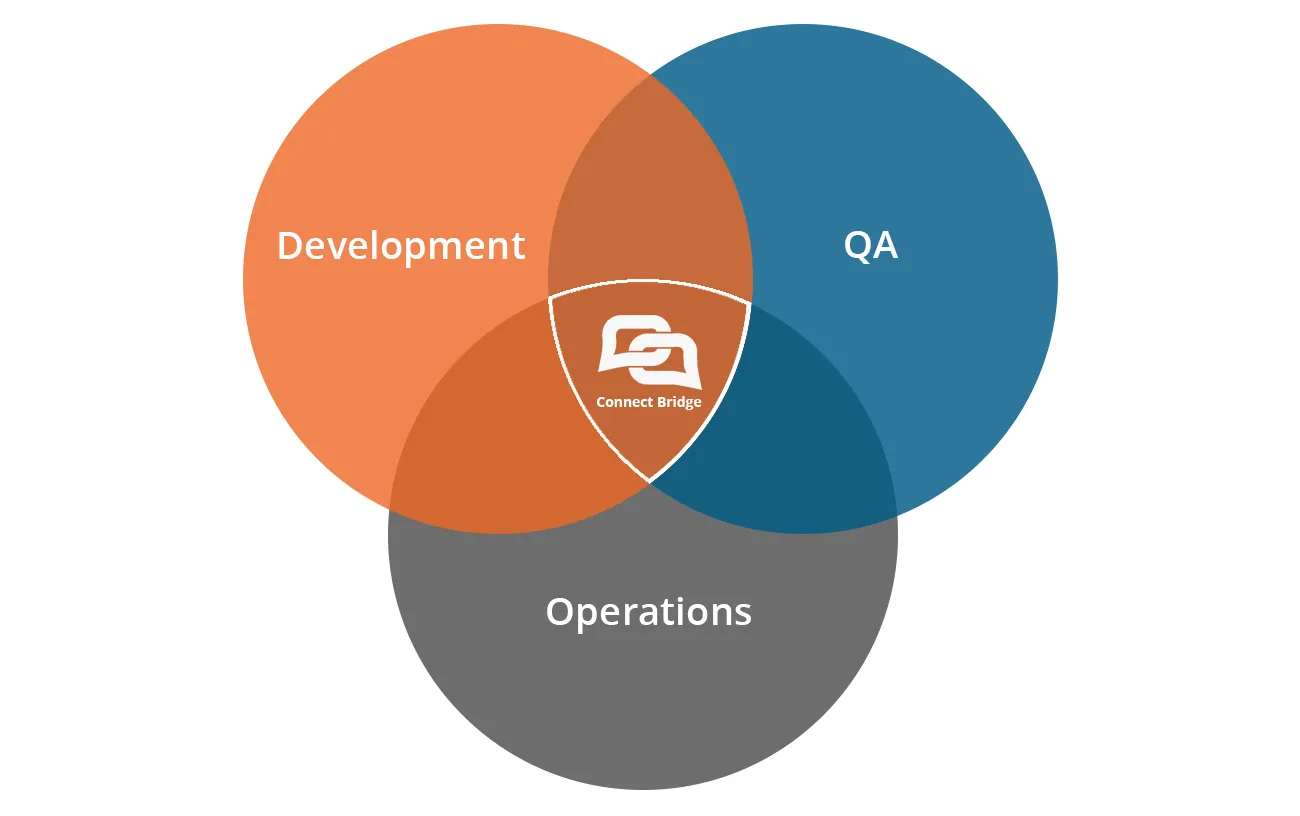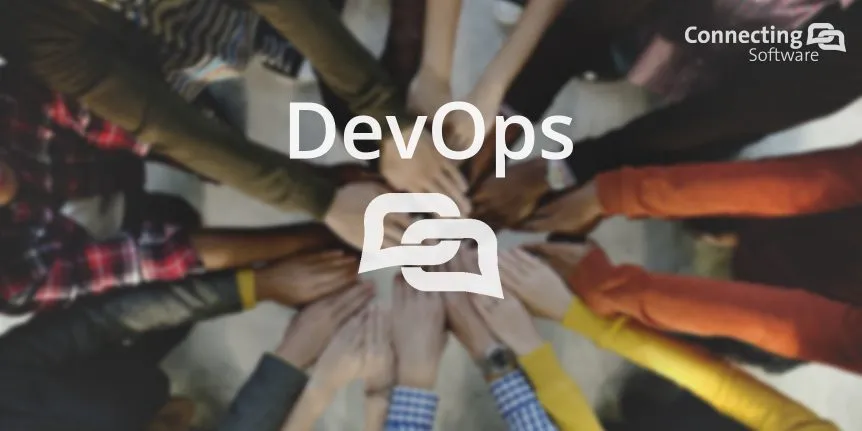Isolated business siloes are a thing of the past. Today, a more agile, cross-disciplinary approach spanning – and engaging – all business functions is required. This need gave rise to DevOps, a new business culture that has taken the industry by storm.
DevOps defines the principles of collaboration and engagement between development, QA and IT operations across the product lifecycle. It is a set of tools and methods enabling a more precise, reliable and flexible product development. By facilitating agile and lean collaboration across functions, it improves the overall quality of service. The main goal of this approach is to maximize the predictability, effectiveness, security and sustainability of operations, often supported by automatization.
The three basic cornerstones of a successful DevOps methodology are processes, people and tools.
Each DevOps initiative must be based on well-defined processes allowing agile project
management.
The key to DevOps is a new business culture based on willingness of people and teams to
cooperate across business functions in new ways.
These new processes and business culture must be supported by lean and efficient tools
enabling automation.
Even the most lean, agile and orchestrated processes must be built based on reliable tools. DevOps, as a rather complex approach, requires a complex set of interoperable tools supporting the development lifecycle, also called a toolchain. In general, DevOps tools fit into several categories including:
Continuous code development and review and version control
Continuous integration and build management
Continuous testing to evaluate business risks
Continuous package and artifact repository management
Continuous release and change management and automation
Continuous infrastructure configuration and management
Continuous performance and user experience monitoring
Clearly, continuity of operations is the key pillar supporting a successful DevOps culture. All its components need to enable ongoing, constant and perpetual improvement and fine-tuning of both products and processes.

Our tools in the DevOps landscape
DevOps is a land-slide movement transforming the realm of IT development from the ground up. It is a fundamental shift in business philosophy relying both on the right people and on the right set of interrelated specialized tools forming a complex, yet well-orchestrated toolchain. But just like every chain, a toolchain is just as strong as its weakest link, thus its components must be chosen very carefully to ensure stability and compatibility.
Connect Bridge, as well as all our products based on the Connect Bridge platform, support the DevOps culture in multiple important areas, namely:
Enabling almost instantaneous adoption with a learning curve of about 2 hours bringing a
guaranteed increase in productivity rate of 200 %
Up to 10-times faster system integration with pre-made connectors to major enterprise systems,
new connectors can be created by request in a matter of days
A 90-percent decrease of coding efforts which results in a dramatic decrease of software bugs, as
it is a pre-made, pre-tested out-of-the-box solution
Support for continuous development and versioning through intuitive GUI utilities
Best-of-class reliability and stability
Continuous monitoring and detailed logging
Ultimate manageability through granular configuration options
Sand-boxed testing of new code within the Query Analyzer tool
Virtually limitless collaboration in the cloud
How it works
The basic workings of the Connect Bridge platform can be categorized in the following phases:
1. Connecting to the target system
Connection to target systems is established via ODBC or JDBC drivers or web services.
2. Visualization of the target system
Connect Bridge provides a set of SQL statements and stored procedures to visualize the target system entities as virtual tables.
3. SQL query execution
The user can interact with the target system by executing SQL queries or stored procedures.
4. Translating SQL to API calls
The submitted SQL queries are translated to API calls or code to call the relevant functions on the target system.
5. Result retrieval
The target system returns the required value, the result code or an error. The result is presented to the user in a user-friendly way.
Why Customers use Connect Bridge
Find out more how our products fit in your evolving DevOps landscape

Comments 18
Learned a lot from your blog. Good creation and hats off to the creativity of your mind. Share more like this.
Nice post. thank you learned more from your blog
This post is marvelous!!! I read this blog very great content and i learn more details. Thank you so much.
I am a beginner at Devops. Your blog is really useful for me.
These tips are really helpful.
Very nice post here thanks for it .I always like and such a super contents of these post.Excellent and very cool idea and great content of different kinds of the valuable information’s.
Wow!! Really a nice Article. Thank you so much for your efforts. Definitely, it will be helpful for others. I would like to follow your blog. Share more like this. Thanks Again.
Great post! I am actually getting ready to across this information, It’s very helpful for this blog. Also great with all of the valuable information you have Keep up the good work you are doing well.
Really informative post. Thanks for taking time to share this with us. Looking forward to learn more from you.
Hi, Your post is quite great to view and easy way to grab the extra knowledge. Thank you for your share with us. I like to visit your site again for my future reference.
Hi, nice blog…waiting for next..thanks for sharing.
Very nice post here thanks to you for this. I evermore like your blog and such a useful content of these post. Keep doing…
Useful blog.. thanks for sharing the blog…
Awesome Blog… Thanks for sharing…
Excellent Blog. Thank you so much for sharing.
Awesome Blog… Thanks for sharing… Waiting for the next update…
Thanks for the good insights.
wonderful information.